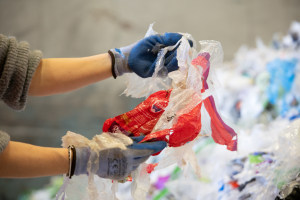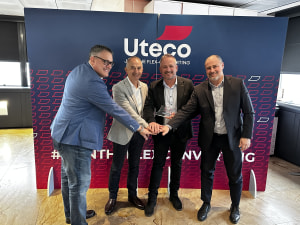The unforeseen disruption experienced in 2020 has prompted food and beverage producers to future proof their businesses as far as is possible. While uncertainty seems set to continue for some time, through focusing on expediting time to market; food quality and safety; supply chain resilience; and the creation of omni-channel models, companies are putting themselves in the strongest position they can to embrace and capitalise on future opportunities.
Operational excellence is driving successful outcomes across many of these initiatives, as firms look to optimise resource efficiency, whether that’s people, energy, water, or all of the above. New technologies such as IoT will therefore become crucial in facilitating the granularity required to minimise waste while maximising output.
So, with this in mind, what does the future look like for food producers?
Prediction 1: Cloud
There’s little doubt that cloud is set for huge growth as a means of creating robustness and agility. Frankly, there is no other way when you look at what the business is asking for. It’s crucial in fully capturing data from IoT devices and the extended supply chain. There’s little point in having temperature readings in a structured ERP database that sits safely within the company’s firewalls. That’s why we have a data lake in the cloud and use AI services and computing power in the cloud to provide intelligence and make the data meaningful. This goes way beyond installing a piece of software. What is smart today will be outsmarted tomorrow with even more clever logic.
A big advantage of cloud is having this kind of technology at hand as a service instead of having to do a lengthy IT project to implement something that will not scale. Cloud also represents an opportunity to implement changes faster opposed to having to do technical migration projects which often require teams to take a step backwards before being able to move forwards.
Many of our leading customers have already moved to the cloud or have stipulated their journey to the cloud. I believe that 2021 will see many more food firms go to the cloud as they seek to drive operational excellence and genuinely future proof their businesses in what looks to be an uncertain few years ahead.
Prediction 2: Omni-channel
Food producing companies have seen a huge shift in demand, with home deliveries taking precedence over restaurants and supermarkets. This trend is unlikely to snap back to pre-pandemic levels as consumers have simply become now more used to ordering their food on the internet. Being omni-channel makes the business less vulnerable and able to take a larger piece of the market. We will see many food producers becoming omni-channel in 2021 by implementing ecommerce, either being a web shop or connecting to a digital marketplace like Amazon.
Another important shift is brand awareness. The brand is more powerful if a relationship exists directly with the consumer, not via the retailer. Today consumers are not calling the customer service number on the packaging when they have a question. The new generation is impatient, they want to place orders, and have questions answered at the time that suits them, even when it’s in the middle of the night. An example of how this is being addressed is via chatbots which can provide ingredients information or food preparation recommendations to the consumer. This also provides a lot of data about how the food is being used and appreciated by the consumers, which can drive product innovation.
Prediction 3: Industry 4.0 tech
Despite the need to become more efficient and reduce food, water and energy waste, only 6 per cent of food processors claim using IoT, with a further 12 per cent stating plans to explore its role within the next two years. A staggering 82 per cent have no plans whatsoever.
These findings could be explained by the fact that until now, we have seen some experiments in isolated domains, such as image recognition in inspection equipment, IoT devices in farming or in production lines. Yet there appear to be few examples of IoT being used widely to drive operations. For example, production machines have sensors to capture a lot of data like temperatures and other quality parameters, but all data remains in the machine and is lost and meaningless after the production run.
Product recalls are one of the greatest financial risks food and beverage companies face. The recall process in the food manufacturing industry is a highly expensive one, averaging more than $10 million in costs to cover activities such as communicating the recall across the supply chain, retrieving and handling the recalled product, investigating the event, and implementing corrective actions to prevent reoccurrence.
Yet research shows that no firms claim to be completely digital for track and trace and quality management, with only 7 per cent saying they are “largely” ready. Half say they are not digital yet, while 43 per cent describe their status in this field as “limited”.
This highlights even more that a lot of data resides in unconnected systems such as spreadsheets, disparate quality systems, supplier systems, and IoT devices within isolated applications.
The good news is that in 2021 more food producers will have paved the way by having a digital platform in place to capture data and connect this to the transactions in their ERP system.
Prediction 4: Data driven
A digital platform makes it possible to use IoT in a more holistic way. The first benefit of this is that faster and more targeted recalls will be possible, with the ability to identify and analyse the root cause of the issue immediately. The second is that data can be used to drive decisions and create a smarter company. A good example is having insight into the inbound overseas shipments of crops, not only with regards to their estimated time of arrival, but also the storage conditions during transportation so that quality and use before dates can be predicted more accurately. This extends the control of the supply chain outside of the four walls of the factory and uses data from farm to fork to increase quality and productivity, reduce food waste and minimize food safety risks. In turn, this can turn challenges into a competitive advantage.
Other applications are using image recognition and machine learning (ML) to dynamically determine the quality of received ingredients and using that to determine the purchase price. A customer of ours is already using image recognition and ML to determine fat and muscle grades of carcasses, which sets the price for the farmer.
Something which would have a big impact on food safety would be the use of IoT sensors to check whether equipment is clean, with the results triggering a cleaning order to avoid contamination risks, which brings us on to the next big trend 2021 is likely to see.
Prediction 5: Transparency to the consumer
Consumers are increasingly seeking more in-depth information about products to help drive their purchasing decisions, with 67 per cent of consumers stating that they want to know everything that goes into the food they buy. 46 per cent of Americans say that claims on food products have a direct influence on their purchase decisions.
In response to this, 23 per cent are planning to provide origin and other product information via a digital platform to the consumer in the next two years, with 15 per cent claiming to already have one in use.
For the remaining 62 per cent, it’s important to demonstrate the efforts being generated into sustainability credentials to consumers. We are seeing a growing number of retailers putting pressure on producers to provide information, with Tesco for instance, asking for food waste reports from the supply chain, and Aldi introducing its Aldi Transparency Code to restore trust in food categories such as meat which mandates that meat processors must provide origin information to Aldi, so that the consumer can see which farm the meat is sourced from.
In 2020 we saw also GS1 Digital Link, Walmart and Carrefour piloting with IBM Food Trust for some food categories and GlobalGAP GGN opening up to consumers. In 2021 and beyond we will see that this will be expanded to more product categories and used to differentiate producers and prove the sustainability of the supply chain. This means extended control of the supply chain from farm to fork and identifying whether the crop is GMO-free, what kind of crop protection has been applied, and other factors.
Infor ANZ managing director Jarrod Kinchington has more than 20 years experience working with business and IT stakeholders in telecoms, utilities, financial services and public sector.






